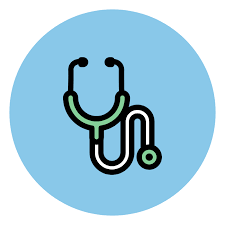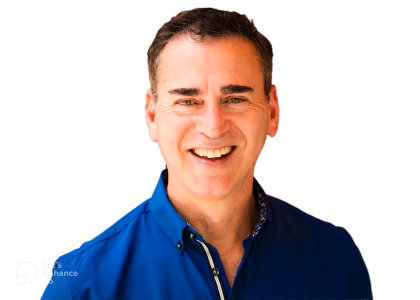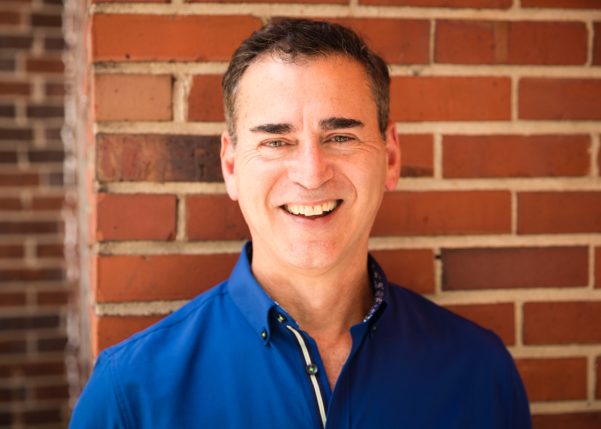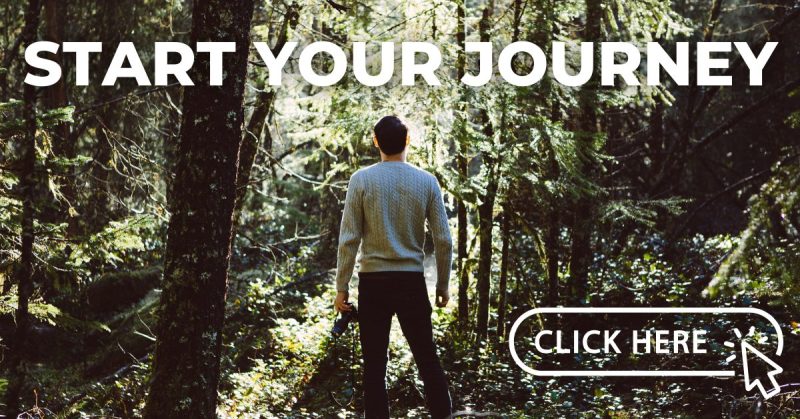Spravato vs IV Ketamine for Depression: Typical Number of Sessions and Timeline
By Michael Alvear, Health Author & Independent Researcher
My research is published on these scholarly platforms:
Last Updated:
Can’t Decide Between IV, Injections, Or Spravato?
Use My Decision Table
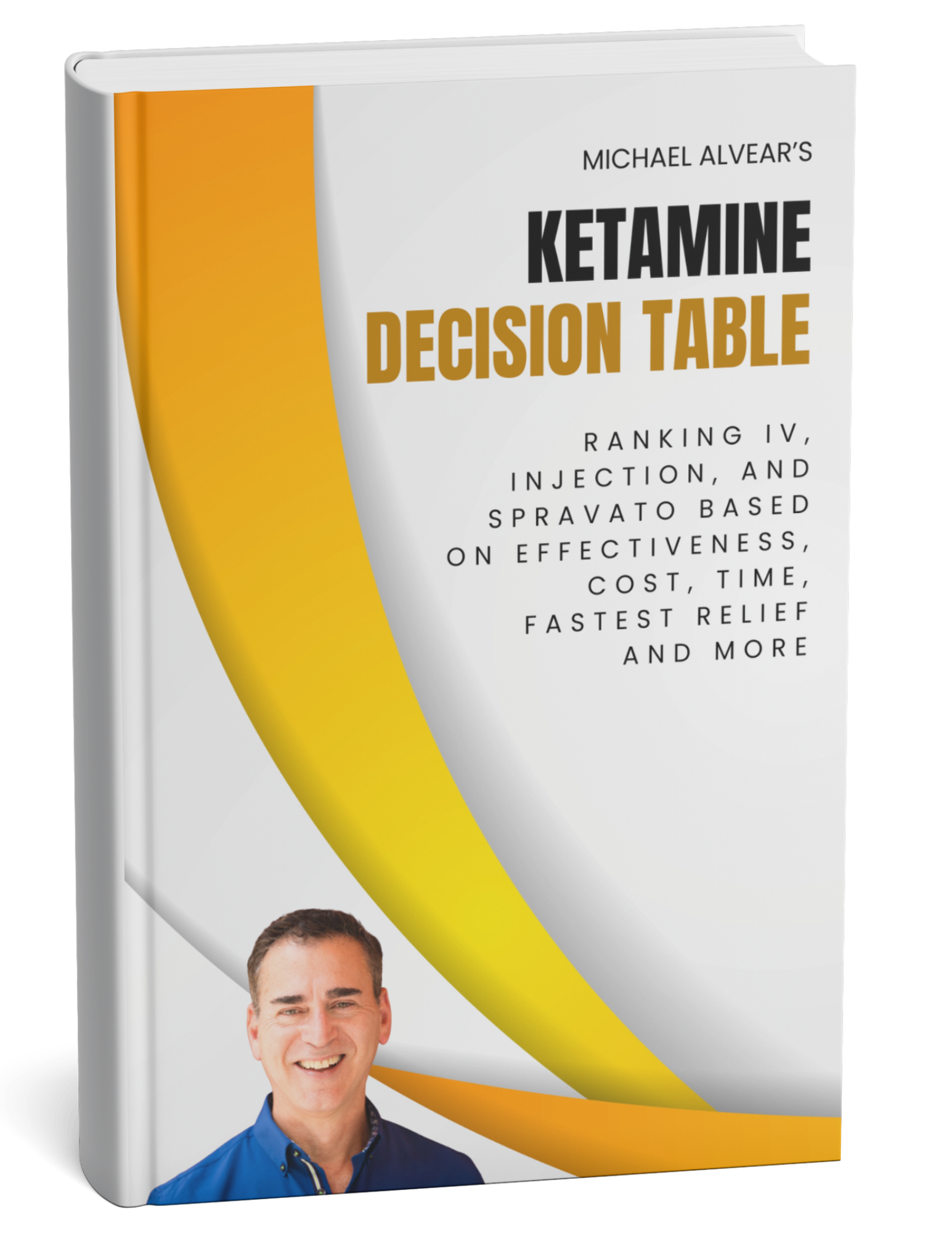
This report ranks all three options—IV, injection, and Spravato—on effectiveness, cost, fastest relief, and more, giving you a clear framework to decide.
Downloads as PDF • 5 minute read
Ketamine Works Fast — If It’s Going to Work at All
Ketamine works quickly—that’s one of its most valuable attributes. If you haven’t experienced at least a 50% reduction in depression symptoms (what doctors call a “clinical response”) by the end of month three, research suggests continuing treatment is unlikely to yield significantly better results. This timeline applies to both IV ketamine and Spravato, making the early sessions particularly crucial in determining whether the treatment will work for you.
Takeaway
Most patients need 11-18 IV ketamine sessions or 21 Spravato treatments over six months, with both methods frontloaded in the first month and tapering down if you respond well.
Takeaway
IV ketamine offers superior bioavailability, faster onset, flexible dosing, dual-molecule benefits, and personalized scheduling compared to Spravato’s fixed protocol.
Takeaway
Spravato’s rigid 21-session protocol with 2-hour monitoring periods creates twice the time commitment, transportation needs, and work disruptions compared to IV ketamine’s 11-18 flexible sessions.
Takeaway
Spravato’s 10 additional sessions create a cascading impact: 91% more work disruptions, doubled clinic time, increased transportation needs, and 148% more childcare demands compared to IV ketamine’s minimum protocol.
Clinical Evidence & Sources for This Page
These evidence summaries highlight key points about Spravato (esketamine nasal spray) and IV ketamine treatment schedules, dosing, response rates, and safety, with direct links to the clinical trials, drug labels, and practice policies used to write this page.
The standard Spravato treatment plan involves a fixed, in-clinic schedule over several months, with more frequent dosing early in treatment and less frequent visits during maintenance.
Spravato is frontloaded—doses are clustered early and then tapered—so it is intended as an intensive, time-limited course of treatment rather than a medication to stay on indefinitely at the same frequency.
Controlled studies of intranasal esketamine show that roughly half of patients achieve a clinical response and about one-third reach remission after six months of treatment.
In esketamine trials and coverage policies, “response” usually means at least a 50% drop in MADRS depression scores, while “remission” is defined as a MADRS score of 12 or lower.
Clinical trials show that esketamine nasal spray can begin to relieve depressive symptoms as early as 24 hours after the first dose, with benefits sustained through the initial 4-week induction phase.
Review articles and prescribing discussions advise that if a patient shows no meaningful improvement after the first 4-week esketamine induction phase, treatment should usually be stopped rather than continued indefinitely.
Revista de Psiquiatría y Salud Mental – Intranasal Esketamine Prescribing Considerations
Expert recommendations suggest that once a patient responds to esketamine, maintenance treatment is commonly continued for at least six months, with tapering and possible discontinuation between 6 and 12 months depending on stability.
Frontiers in Psychiatry – Long-Term Esketamine Maintenance Guidance
In Spravato’s phase 3 program, only a minority of patients stayed on treatment long-term: about 30% were treated for at least six months and only around 11% received a year or more of therapy.
Because esketamine can cause sedation, dissociation, and temporary cognitive impairment, patients are instructed to arrange a ride home and to avoid driving or operating machinery until the next day after a full night’s sleep.
For adults with treatment-resistant depression, the Spravato label describes a fixed protocol: twice-weekly dosing in weeks 1–4, weekly dosing in weeks 5–8, then maintenance every 1–2 weeks at 56 mg or 84 mg.
IV ketamine for depression is commonly given at about 0.5 mg/kg infused over 40 minutes, usually 1–3 times per week in an acute series, with follow-up infusions spaced out as maintenance if the patient responds.
U.S. VA – Ketamine Infusion for Treatment-Resistant Depression
Payer and clinical policies for Spravato typically call for a formal reassessment after the 4-week induction phase, reserving continued treatment for patients who show clear benefit and requiring REMS-certified clinics with in-office monitoring.
Blue Cross of Louisiana – 2024 Esketamine (Spravato) Policy & REMS Requirements
Intravenous ketamine delivers nearly 100% of the dose directly into the bloodstream, while intranasal esketamine has lower and more variable bioavailability, which contributes to the need for more frequent dosing.
Journal of Clinical Psychiatry – Ketamine Dosing, Administration & Duration
Spravato is supplied only in fixed 28 mg nasal spray devices, so TRD doses are 56 mg (two devices) or 84 mg (three devices), whereas IV ketamine is typically weight-based around 0.5 mg/kg and can be adjusted for each patient.
Racemic IV ketamine used for depression contains both the R- and S-enantiomers, while Spravato contains only S-ketamine (esketamine), and reviews describe esketamine maintenance as individualized, often using every-1–2-week dosing at the lowest frequency that maintains benefit.
Journal of Affective Disorders – Racemic Ketamine vs Esketamine & Maintenance
Randomized trials and meta-analyses of low-dose IV ketamine (around 0.5 mg/kg) show rapid antidepressant effects within hours to a day, with roughly one-third of patients achieving response or remission during the acute treatment series, and no universally fixed maintenance schedule afterward.
Journal of Affective Disorders – IV Ketamine Efficacy & Outcomes
What Does Scientific Research Show About IV Ketamine’s Effectiveness For Depression?

I pulled together 33 systematic reviews from the last five years into one report—so you don’t have to rely on hype, guesses, or anecdotes. This is the highest level of real-world evidence we have.
Inside My Report You’ll Find
- What percent of patients enter remission—broken down by delivery method
- Which method is most effective—IV, injection, or Spravato nasal spray
- How fast ketamine can work to reduce or end symptoms
- Which combinations (like psychotherapy) may enhance response
- And a lot more…
Verified by the Platforms That Matter
This research summary report has been published across four trusted platforms that host peer-reviewed or open science content, including:
– Published ketamine research on Zenodo
– Ketamine evidence summary hosted on SSRN
– Scientific report on ketamine outcomes on Figshare
– Evidence-based ketamine therapy report on OSF
